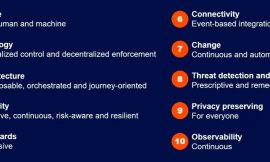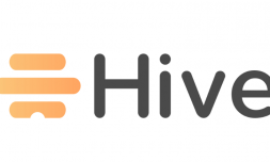If you’re trying to decide on endpoint protection software for your business, these two options are good choices. Which one should you choose? Here is a comparison of the two.

In an ideal world, there would be no need for security software. But also, in an ideal world, people would be able to leave their doors unlocked 24/7 without worrying about dangerous intruders. Unfortunately, this is not the world we live in, so we must take security measures to protect our valuables. For digital assets, endpoint protection software solutions can ensure security across each of your digital processes.
SEE: Password breach: Why pop culture and passwords don’t mix (free PDF) (TechRepublic)
Endpoint protection solutions
Businesses and organizations commonly use endpoint protection tools like Crowdstrike Falcon and Avast for securing their networks from potential threats. These platforms are deployed on the endpoints of user networks to monitor every one of their devices. Cyberattacks can take place on vulnerable endpoints and, if left undetected, can compromise the security of the organizational network. This reduces the risk of undetected security incidents and eradicates issues before they can become serious.
Below is a comparison of Crowdstrike Falcon and Avast, their valuable functions, and their methods for ensuring the security of their users’ network endpoints.
Crowdstrike Falcon vs. Avast: Which is better at locating and identifying security threats?
Each of these products uses its technological features to detect potential threats before they can cause further harm to your organization.
Crowdstrike Falcon uses several methods for locating and identifying potential security threats. For example, its malware sandboxing module scans for and protects against newer, evolved threats. The system’s integrated threat intelligence can then be applied to grant users insights and context regarding their attacks. It also has identity threat protection features to keep your team members safe on their endpoint devices. Through this, it can detect lateral movement for authenticated devices to detect anomalies and threats to access privileges and identities for your network’s Azure AD, Microsoft Active Directory, and cloud single sign-on solutions. Finally, a threat detected through automated system scanning will cause a prioritized alert to be sent to the user for notification purposes.
Avast takes its endpoint security detection quite seriously, as it scans programs and files utilized by endpoints and ensures their security before allowing them to be used through endpoint devices. Avast’s detection methods, like machine learning and advanced heuristics, help the software locate potential dangers, such as malware, adware, spyware, worms, trojans and other malicious software. In addition, its Wi-Fi- inspector feature helps locate vulnerable areas of your network that may be at risk of attack. Once suspicious assets are collected, they are sent to the threat lab and analyzed.
Crowdstrike Falcon vs. Avast: Which has better device management processes?
Endpoint protection platforms like Crowdstrike Falcon and Avast can also provide security by monitoring endpoint devices connected to your network. This can help keep your data and assets safe, as any can be detected and eradicated before making it further into your network system.
Crowdstrike Falcon is a cloud-based solution that simplifies the endpoint security processes for users through its centralized management and accessible dashboards. In addition to the previously mentioned endpoint device authentication security, the tool conducts real-time application inventory management to maintain the device’s safety. The platform may be adjusted and customized to allow scalability, malware analysis, media protection and proper media removal. The Crowdstrike Falcon API means users can also connect with their various other security software products for better data use.
With Avast, data is easily managed through the management console. Through this online management platform, users can manage their devices, their subscriptions, the frequency of their scheduled security scans, and deploy antivirus features as needed. It has security features for specific components of endpoint devices as well, including Webcam Protection and VPN encryption for online browsing. For digital assets that may pose a threat to the endpoint’s security, Avast’s Data Shredder can ensure that they are permanently removed. But when security issues strike, hope is not always lost. Endpoint devices that have been compromised may be salvageable, as the Avast rescue disk has an external backup antivirus for these situations.
Crowdstrike Falcon vs. Avast: Which is better at responding to endpoint security threats?
It is important to consider how your endpoint protection solutions handle security threats once they have been identified.
Crowdstrike Falcon Spotlight uses endpoint detection information to assess networks for vulnerability, strengthen areas of weakness and fix security gaps. The threat response occurs in real-time and is displayed within the solution’s platform for users to address and eradicate potential threats. Its rapid deployment and configuration features begin within the first 24 hours of a possible threat engagement, with powerful prevention policies to quickly cease the execution and lateral movement of active attacks. Machine learning is also used to analyze virus behavior and block potential threats before they can become larger issues. Crowdstrike Falcon’s Real Time Response feature can remediate security issues in your endpoints with precision to analyze attacks, manage processes, delete any memory-resident malware or malicious files and run recovery scripts at scale. Its analysis and reporting tools also enable users to gain actionable insights from the collected data. Finally, the system works to resolve threats for endpoint recovery, so users can get back to work without having to reimage or reissue devices.
Avast responds to endpoint security threats and suspicious activity by taking measures to turn them away before they can affect the device. Its Firewalls filter network traffic to spot suspicious aspects. Avast has shields for blocking dangerous programs and websites before they can be used for device applications, web actions and emails. Online activities are encrypted with Avast’s VPN so users can browse the web anonymously and safely. Your team members will surely appreciate the system’s response to security threats, and there is even an Anti-spam feature for blocking unwanted spam emails. Finally, the technology manages any detected threats, transforming users into a worldwide network of cooperating sensors. When an endpoint device encounters malware, Avast uses six layers of protection to identify, block and instantly inform the rest of the network of the encounter.
Crowdstrike Falcon vs. Avast: Which is better?
So, which of these devices came out on top? Well, the answer may change depending on who is asking.
Based on what we’ve learned about each of the solutions, it’s safe to say that Crowdstrike Falcon practices a more action-oriented approach when addressing endpoint threats, as itstool constantly is using its technology and automation to defend against the next attack. However, Avast’s process can be considered more defensive than offensive. Rather than spending energy on the analysis of detected threats, this tool is loaded to the brim with methods for defending against any that may occur.
If you’re interested in either of these devices, you should consider which approach would be best for the security needs of your network endpoints.
Source of Article



